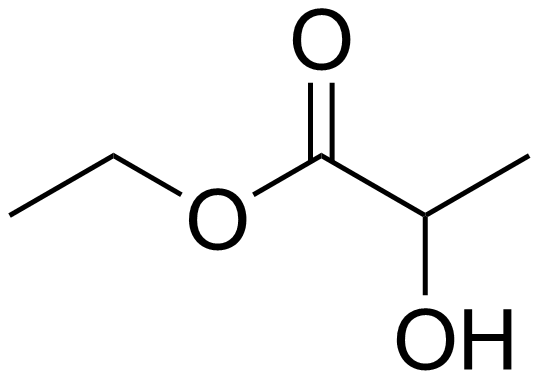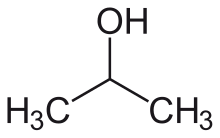Category: Cleaning and Surface Treatment

Product Details:
| CAS No | 77-92-9 |
| Grade Standard | Chemical Grade |
| Physical State | Solid |
| Usage/Application | Versatile compound used in food and beverage production, household cleaning products, and pharmaceuticals for its acidity and chelating properties. |
| HS Code | 29181400 |
| Packaging Details | Drum |
| Chemical Formula | C?H?O? |
| Purity % | >95% |
| Country of Origin | Made in India |
Citric Acid Overview:
Citric acid (C6H8O7) is a weak organic acid found naturally in citrus fruits such as lemons, oranges, and limes. It is commonly used in food and beverage production, as well as in various household and industrial applications. Citric acid is known for its sour taste and is widely used as a flavoring agent, preservative, and chelating agent.
Key Characteristics:
- Weak organic acid
- Crystalline solid with a sour taste
- Highly water-soluble
Applications:
- Food and Beverage Industry: Citric acid is widely used as a flavoring agent, acidity regulator, and preservative in food and beverage products, including soft drinks, candies, jams, and sauces.
- Household Cleaners: It is utilized in household cleaners and detergents for its chelating properties, which help remove mineral deposits and improve cleaning effectiveness.
- Pharmaceutical Industry: Citric acid is used in the pharmaceutical industry as an excipient in tablet formulations and as a buffering agent in liquid medications.
- Cosmetics and Personal Care Products: It is added to cosmetics, skincare products, and personal care items as a pH adjuster, antioxidant, and fragrance enhancer.
- Industrial Applications: Citric acid is used in various industrial processes, such as water treatment, metal cleaning, and as a descaling agent for boilers and pipelines.
Hazards:
- Generally regarded as safe for consumption in small quantities.
- Skin and eye irritation may occur upon direct contact with concentrated solutions.
- Inhalation of dust or aerosols may cause respiratory irritation.
- Prolonged or excessive consumption may lead to gastrointestinal discomfort or tooth erosion.
Product Enquiry

Product Details:
| CAS No | 687-47-8 |
| Grade Standard | Chemical Grade |
| Physical State | Liquid |
| Usage/Application | Commonly utilized as a solvent in various industries, including coatings, cleaning products, and personal care items, due to its low toxicity and biodegradability. |
| HS Code | 291811 |
| Packaging Details | 200 litres Drum |
| Chemical Formula | C?H?O? |
| Purity % | >95% |
| Country of Origin | Made in India |
Ethyl Lactate Overview:
Ethyl lactate is a clear, colorless liquid with a mild, fruity odor. It is an ester of lactic acid and ethanol, commonly used as a solvent in various industrial applications, including coatings, paints, and cleaning products.
Key Characteristics:
- Clear, colorless liquid
- Mild, fruity odor
- Soluble in water and organic solvents
Applications:
- Coatings and Paints: Ethyl lactate is utilized as a solvent in water-based coatings and paints, providing low volatility and excellent compatibility with resins and pigments.
- Cleaning Products: It is used as a solvent in industrial and household cleaning products, such as degreasers, strippers, and surface cleaners, due to its effective solvency and low toxicity.
- Printing Industry: Ethyl lactate is employed as a solvent in printing inks, particularly in flexographic and gravure printing, where it serves as a safer alternative to traditional solvents.
- Personal Care Products: It is used in personal care products, such as cosmetics and skin care formulations, as a solvent, emollient, and fragrance ingredient.
- Chemical Synthesis: Ethyl lactate serves as a precursor in the production of other esters and organic compounds, as well as in the synthesis of pharmaceuticals and agrochemicals.
Hazards:
- Generally regarded as safe for most applications.
- Inhalation of vapors may cause mild irritation to the respiratory system.
- Contact with skin or eyes may cause mild irritation or dermatitis in sensitive individuals.
- Non-toxic and biodegradable, with low environmental impact compared to traditional solvents.
Product Enquiry

Product Details:
| CAS No | 7664-39-3 |
| Grade Standard | Industrial Grade |
| Physical State | Liquid |
| Usage/Application | Catalyst, etchant, and precursor in various industries including pharmaceuticals, electronics, and petrochemicals. |
| HS Code | 28111100 |
| Packaging Details | 200 litres Drum |
| Chemical Formula | HF |
| Purity % | 40%, 48%, 60% |
| Country of Origin | Made in India |
Hydrofluoric Acid Overview:
Hydrofluoric acid (HF) is a highly corrosive and toxic inorganic acid, with the chemical formula HF. It is a colorless solution with a pungent odor and is capable of dissolving various materials, including glass and metals. Hydrofluoric acid is widely used in industrial processes, laboratory applications, and as an etchant in semiconductor manufacturing.
Key Characteristics:
- Highly corrosive liquid
- Colorless solution with a pungent odor
- Capable of dissolving silica-based materials, such as glass
Applications:
- Etchant: Hydrofluoric acid is used in semiconductor manufacturing as an etchant for silicon dioxide (glass) and silicon nitride.
- Glass Etching: It is employed in the glass industry for etching and engraving designs on glass surfaces.
- Metal Pickling: Hydrofluoric acid is utilized for removing oxide and scale from metal surfaces in various industrial processes.
- Chemical Synthesis: It serves as a precursor in the production of fluorine-containing compounds, such as fluorocarbons and fluorinated pharmaceuticals.
- Laboratory Use: Hydrofluoric acid is used in laboratories for chemical analysis, glassware cleaning, and as a reagent in organic synthesis.
Hazards:
- Highly corrosive and toxic.
- Can cause severe burns upon contact with skin, eyes, or mucous membranes.
- Inhalation of vapors can lead to respiratory irritation, coughing, and lung damage.
- Exposure to hydrofluoric acid can result in systemic toxicity and potentially fatal systemic effects if absorbed through the skin.
Product Enquiry

Product Details:
| CAS No | 67-63-0 |
| Grade Standard | Industrial Grade |
| Physical State | Liquid |
| Application | Widely used as a disinfectant and solvent. |
| HS Code | 29051220 |
| Packaging Details | 200 litres Drum |
| Chemical Formula | C?H?O |
| Purity % | >99% |
| Country of Origin | Made in India |
Isopropyl Alcohol Overview:
Isopropyl alcohol, commonly known as rubbing alcohol, is a volatile, colorless liquid with a sharp odor. It is a secondary alcohol and is widely used as a solvent, disinfectant, and antiseptic.
Key Characteristics:
- Clear, colorless liquid
- Sharp odor resembling alcohol
- Soluble in water and other organic solvents
Applications:
- Disinfectant: Effective for sterilizing surfaces and medical equipment.
- Antiseptic: Used for skin disinfection before injections or surgeries.
- Solvent: Widely employed in laboratories and industries for dissolving oils, resins, and gums.
- Cleaning Agent: Removes dirt, grease, and grime from surfaces.
- Cooling Agent: Applied to reduce fever or discomfort through evaporation.
Hazards:
- Flammable liquid and vapor.
- Irritating to eyes, skin, and respiratory system upon prolonged exposure.
- Ingestion can cause nausea, vomiting, and central nervous system depression.
- Inhalation of high concentrations may lead to headaches, dizziness, or unconsciousness.
Product Enquiry

Product Details:
| CAS No | 7697-37-2 |
| Grade Standard | Industrial Grade |
| Physical State | Liquid |
| Usage/Application | Widely employed in industries for chemical synthesis, metal processing, and as a reagent in fertilizer production. |
| HS Code | 28080012 |
| Packaging Details | 200 litres Drum |
| Chemical Formula | HNO? |
| Purity % | >60% |
| Country of Origin | Made in India |
Nitric Acid Overview:
Nitric acid (HNO3) is a highly corrosive and strong mineral acid commonly used in various industrial processes, laboratory applications, and as a reagent in chemical synthesis. It is a colorless to yellowish liquid with a sharp, acrid odor and is known for its powerful oxidizing properties.
Key Characteristics:
- Highly corrosive mineral acid
- Colorless to yellowish liquid with a sharp odor
- Strong oxidizing agent
Applications:
- Metal Etching: Nitric acid is used for etching and cleaning metals, such as stainless steel and aluminum, in various industrial processes.
- Fertilizer Production: It is a key ingredient in the production of ammonium nitrate, a widely used fertilizer.
- Explosives Manufacturing: Nitric acid is utilized in the production of explosives, such as TNT (trinitrotoluene) and nitroglycerin.
- Laboratory Reagent: It serves as a reagent in chemical analysis, organic synthesis, and as a nitrating agent.
- Pickling Agent: Nitric acid is used for pickling metals to remove scale, rust, and other impurities.
Hazards:
- Highly corrosive and strong oxidizing agent.
- Can cause severe burns upon contact with skin, eyes, or mucous membranes.
- Inhalation of vapors can lead to respiratory irritation, coughing, and lung damage.
- Exposure to nitric acid fumes may result in pulmonary edema and systemic toxicity.
